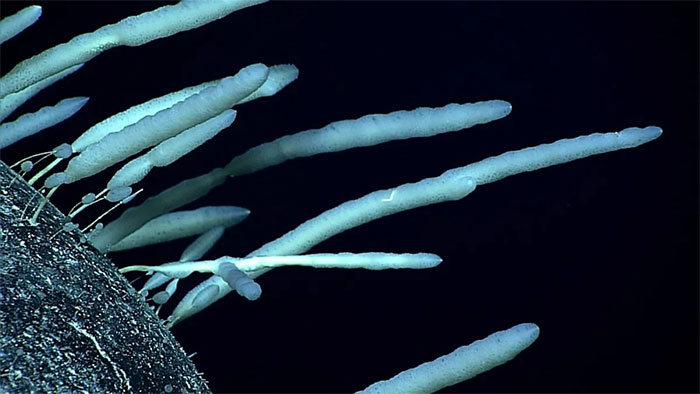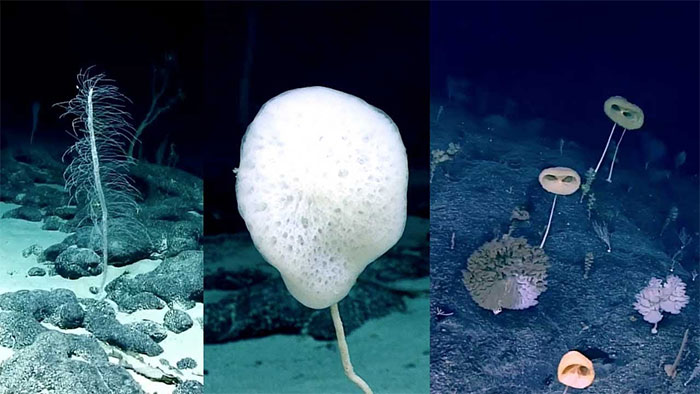Strange Antarctic animal can live up to 11,000 years
One of the most astonishing examples is the Antarctic sponge Monorhaphis chuni, with one specimen estimated to be over 11,000 years old.
Monorhaphis chuni spends its life firmly attached to the ocean floor thanks to a single giant silicon spine . This spine, which acts as a spine, not only anchors the sponge's body but also forms a continuous cylindrical structure.
M. chuni's unique structure and longevity have also amazed scientists. In 2012, a team analyzed a specimen measuring more than 2 meters long and discovered that its silicon fiberglass structure grew like tree rings, preserving important information about climate history.


When it comes to sponges, few people think that these stationary, plant-like creatures are animals. However, sponges are not only animals but also among the longest-lived species on the planet.
11,000-year-old sea sponges and a treasure trove of climate information
The M. chuni specimen was discovered in the East China Sea in 1986, at a depth of 1,100 meters. Analysis showed that the sponge had witnessed more than a millennium of climate change. Growth rings on the silicon spicules showed signs of multiple periods of changing water temperatures.
' Under an electron microscope, we found four irregularly developed regions that showed water temperature increases during periods of submarine volcanic eruptions,' said Klaus Peter Jochum, lead author of the study. These changes included temperature increases from less than 2°C (35.6°F) to as much as 6–10°C (42.8–50°F) during periods of major upheaval.
With their incredible longevity, sponges like M. chuni are not only living witnesses to Earth's history, but also valuable archives of climate information. By studying these specimens, we can gain insights into how deep ocean temperatures and environments have changed over thousands of years – something that was previously only conjecture.
Behind their simple appearance, sponges like Monorhaphis chuni actually contain many wonders. Their silicon spikes are not only survival tools but also "books" recording the history of the Earth, helping humans decode the secrets of the environment and climate in the distant past.
- Sea anemones live under Antarctic ice
- 'Earth MRI' reveals another world full of strange creatures beneath Antarctica
- Discovered animals with strange blue blood
- Discover the world's oldest animal sperm in Antarctica
- Strange fish found in Antarctica: Has white blood, will die if the temperature exceeds 5 degrees
- Antarctic ice disappeared 2700 billion tons during the last 25 years
- Ice mountains 'disrupt' ecological diversity in the Antarctic seabed
- What mystery makes the Antarctic ice sheet green?
- The land of 120,000 years without the sun in Antarctica
- Antarctic forest before the great extinction 252 million years ago
- The strange poetic village between Antarctica forces you to cut off a part of your organs if you want to settle down
- The area of ice in Antarctica is mysteriously narrow
 Surprised: Fish that live in the dark ocean still see colors
Surprised: Fish that live in the dark ocean still see colors Japan suddenly caught the creature that caused the earthquake in the legend
Japan suddenly caught the creature that caused the earthquake in the legend A series of gray whale carcasses washed ashore on California's coast
A series of gray whale carcasses washed ashore on California's coast Compare the size of shark species in the world
Compare the size of shark species in the world